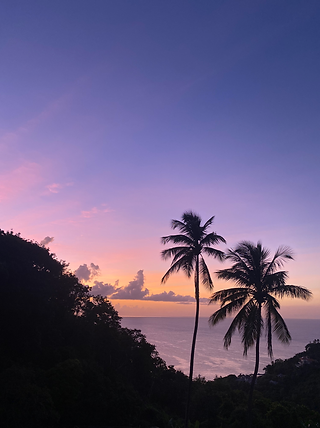
Lady Marigot
Marigot Bay.

Marigot Bay has long been the talk of lore due to its luscious untouched ridge-lines, mangrove trees and deep emerald bay. A famous American author by the name of James A. Michener, who wrote an epic best-selling work on the Caribbean (titled as such), declared Marigot, “the most beautiful bay in the Caribbean.” We quite agree!
Known now for its picturesque beauty, its sheltered bay & deep waters which function as a “Hurricane Hole”, it was instrumental to the history of the Caribbean. It was a favorite landing spot of the infamous “rum-runners”, more ignominiously known as pirates. It also featured crucially in the nautical wars of the French and British during the 18th century.
We can think of no better place to have named our stunning Privilège catamaran after!
the most beautiful bay in the Caribbean...


Legend has it that British Admiral Samuel Barrington, while being hotly pursued by the French navy, sailed his fleet into Marigot Bay. There, the British eluded the French by hiding behind a sandbar bespeckled with palm trees, even going so far as to lash palm fronds to their masts! Then, French sailing past, the British could emerge unseen. A painting of this daring ploy may be seen to the right.
Admiral Barrington's venture was successful, as the British fleet was able to sneak-attack the French and so win the decisive battle at Cul de Sac bay.
Marigot Bay may also be known as the landing place of the Giant Pink Sea Snail in the iconic 1967 movie ‘Doctor Dolittle’. Whether you know Marigot Bay through Hollywood, history, or not at all, we can ensure that Michener was right in claiming it as the “most beautiful bay in the Caribbean”!
Marigot Lore...

Interested in staying in Marigot Bay? Please visit the "Pink Palace Package" section to see our luxury villa, here. What better way to spend vacation than at a Caribbean castle with your own catamaran at bay's bottom? Please leave a note in submission if interested!
Saint Lucia - 'the Helen of the West'


Saint Lucia - 'the Helen of the West'
Seven times British, seven times French, Saint Lucia has been an independent country since February 22, 1979. Like Canada and Australia, it is a part of the Commonwealth of Nations.
The island was fought over so often that it is colloquially known as the ‘Helen of the West’ in homage to Helen of Sparta, then Troy - 'the face that launched ten thousand ships'. It is one of two countries in the world named after a woman but the only one named after a human woman. The other is Ireland - named for the Celtic goddess of fertility, Eire!
Saint Lucia allegedly got its name after French sailors were shipwrecked on the island on the 13 of December, the feast day of St. Lucy. The island was thus named in her honor. Saint Lucy lived ~AD300, about when Saint Lucia was first inhabited.
Saint Lucia remains the crowned jewel of the Caribbean. 14 miles wide and 35 miles long, the southwestern coast of the Island features one of the most stunning scenes in the world - the Pitons. Now a world heritage site, Gros Piton and Petit Piton are volcanic peaks that stretch ~2,500 feet above sea-level. They make for a view that one will never forget!
A Brief History...




Part of the Windward Islands of the Lesser Antilles, the island was first settled by the Arawak people. Sailing north from Venezuela in dugout canoes, the Arawak farmed the fertile lands, enjoyed the magnificent landscapes, & were a peaceable folk. Then came the Caribs. Another group of settlers sailing from South America, the Caribs' hunter-gatherer lifestyle gave them a natural advantage in the contest to claim the natural wonder that is Saint Lucia.
The Arawak were overwhelmed & driven north and west through the Leeward Islands and eventually to the Greater Antilles. The descendants of those initial Saint Lucian settlers inhabited Hispaníola when Christopher Columbus first came to America – that island was his first stop.
Though much was taken during the Age of Exploration, Caribs & Arawaks still live across the Caribbean & continue to preserve their native culture & language. Both the Caribs & Arawaks still engage in the traditional making of dug-out canoes, often from the Silk-Cotton (Ceiba) trees.
The Caribs called Saint Lucia Hewanorra, meaning 'Land of the Iguanas'. While Iguanas are no longer in Saint Lucia, the larger of the two airports in Saint Lucia preserves the Caribs' original name.
Many other Carib naming conventions exist to this day. Guyana is a Carib word for the 'Land of Many Waters', and Carriacou, one of the A.B.C. islands, is Carib for the 'Land of Many Reefs'.



Saint Lucia today is a wonderful place. Moved beyond sugar plantations, still distilling rum, the island has a vibrant tourism industry befitting of its natural beauty.
